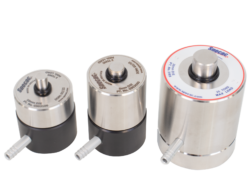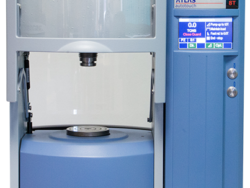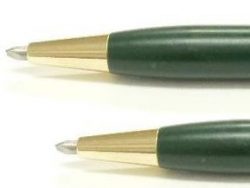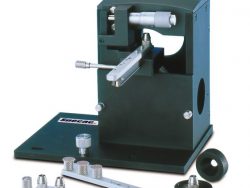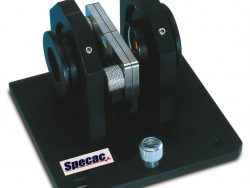Description
*NEW* APEX 400 Press – High Throughput XRF sample prep
The APEX 400 hydraulic press is dedicated to the production of pressed pellets for XRF laboratories and other elemental analyses. It is a benchtop press designed for repeated use in high-throughput analytical testing environments, producing sample pellets in steel rings, aluminium cups, or as unsupported pellets.
Key features
- Compact, benchtop press: Suitable for all laboratories, even where space is limited.
- Fully automatic and programmable pressing cycles: Automated processes streamline your workflow and free your team to work on other tasks.
- Quickshift Technology for automatic pellet extraction: When pressing pellets without steel supporting rings, the pressing platen switches automatically between pressing and extraction modes.
- Supports use of ring dies and standard dies: Specac’s first press to support ring dies, for both 51.5 x 35 mm rings and 40 x 32 mm rings, as well as standard dies of 32 and 40 mm diameters.
- Sample loading made easy: Access to the die is via a pull-out drawer, positioned at a comfortable height for repeated sample filling. The external position of the die when filling prevents build-up of stray powder inside the machine.
- Designed for maintenance: The press is design with servicing in mind, from modular fitment of components to diagnostic reporting.
The APEX 400 pellet press is designed for use in busy on-site testing laboratories at mining, manufacturing, and other material testing facilities. It has several features designed to automate the pressing cycle, including ‘Quickshift’ technology, which automatically moves the pressure plate between load and release positions to remove the pellet from the pellet die without manual intervention.
Specifications
- Rated maximum load: 400 kN (40 t)
- Dimensions: W 462 mm x D 346 mm x H 573 mm (W 18.2″ x D 13.6″ x H 22.5″)
- Weight (uncrated): 120 kg (265 lbs)
- Power: single phase, universal power supply
Explanation of pressing cycles
The pressing cycle depends on the type of Pellet Die used. Programming of any cycle is conveniently achieved with the touch screen.
Using Ring Dies (single stage pressing)
When using a Ring Die, the pellet is formed within a reusable supporting steel ring. The steel ring sits loosely in the pellet die such that it can be removed by hand after a single compression stroke. Each sample is prepared in its own steel ring, so a supply of several such rings is needed to produce a full batch of samples. After the samples have been tested, the samples can be removed and the rings cleaned and returned for reuse. Using ring dies is generally the faster process because a single pressing stage is required.
Using Standard Dies (two-stage pressing)
When using a standard die, the pellet is formed within the body of the pellet die itself. The pellet can be extracted by a second compression stroke which is applied to the die body only. This allows the plunger to drive the pellet clean through the bore of the die body. A recessed area must be provided around the top of the bore for the pellet to exit into, which is achieved on the APEX 400 using ‘Quickshift technology’.
Quickshift Technology
The APEX 400 features a sliding pressure plate with two positions: a flat ‘load’ position which applies a force to the die body and the sample together; and a recessed ‘release’ position which loads up the die body only and provides space for the finished pellet to release into. The position of the pressure plate is controlled by the press itself as part of its programming, and does not require separate actuation by the user of the press. Quickshift Technology speeds up the two-stage pressing cycle by removing the need to manually adjust the pellet die and press platen for pellet extraction.
Cycle times
The APEX 400 press can produce approximately 40 pellets per hour with single stage pressing in ring dies and 20 pellets per hour using standard dies and Quickshift Technology. Note that the actual rates achieved will depend on sample types, the pressing sequence, and availability of sufficient sample to work continuously for one hour.
Datasheet


